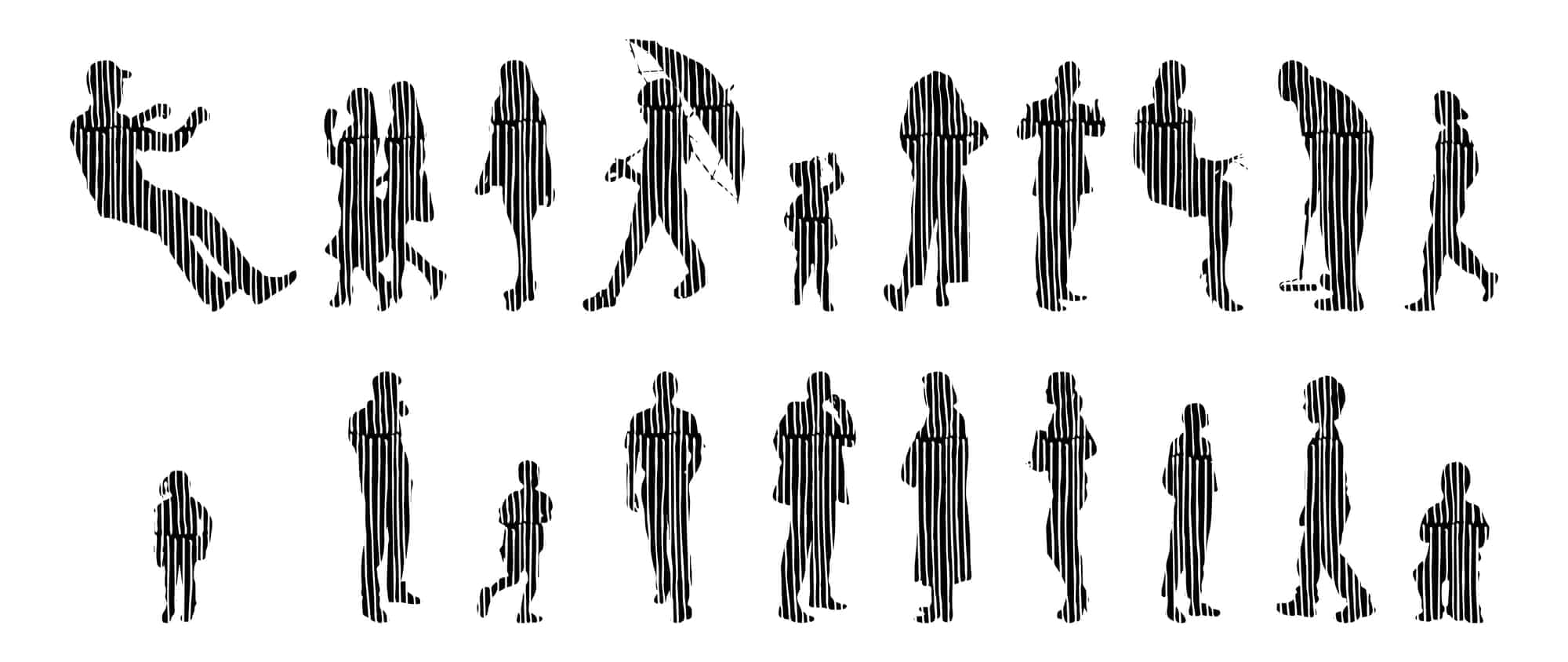 If you’re venturing into the world of web development, the term ‘development stack’ might sound like industry jargon, but it’s actually a cornerstone concept. Simply put, a development stack is a collection of software tools and technologies used to build a complete application. It’s like a chef’s chosen ingredients and utensils, each playing a unique role in creating a dish.
If you’re venturing into the world of web development, the term ‘development stack’ might sound like industry jargon, but it’s actually a cornerstone concept. Simply put, a development stack is a collection of software tools and technologies used to build a complete application. It’s like a chef’s chosen ingredients and utensils, each playing a unique role in creating a dish.
A Journey Through Time: The Evolution of Stacks

Development stacks have evolved significantly over the years. In the early 2000s, stacks were fairly basic, often consisting of a database, a server, and a web framework. Fast forward to today, and you’ll find stacks featuring advanced functionalities like real-time analytics and cloud-based services. This evolution mirrors the tech world’s rapid advancements, highlighting how developers continually adapt to meet growing and changing demands.
The Critical Role of Development Stacks in Modern Web Development
Think of development stacks as the backbone of web development. They determine how a website or application behaves, scales, and even how secure it is. Choosing the right stack is like picking the right foundation for a building – it’s crucial for the entire structure’s stability and functionality.
Impact on Efficiency and Innovation
A well-chosen stack not only makes development more efficient but also opens doors to innovation. For example, the MEAN stack (MongoDB, Express.js, AngularJS, Node.js) offers a JavaScript-based framework, enabling seamless server and client-side scripting. Such efficiency and coherence can significantly cut down development time, freeing up developers to focus on innovative features.
Real-World Example: Facebook’s Tech Stack
Consider Facebook, a platform handling billions of interactions daily. Their complex stack, which includes languages like PHP and databases like MySQL, is tailored to manage massive data while providing a smooth user experience. This example underscores the importance of a stack that can handle scale and complexity with ease.
Statistics Speak Volumes
According to the Stack Overflow Developer Survey 2023, over 60% of professional developers believe that the right stack choice directly impacts a project’s success. This stat highlights the stack’s crucial role in the tech landscape.
Breaking Down the Concept
While the concept of a development stack is straightforward, mastering it requires a deep understanding of each component’s role and how they interact. It’s like learning a language; knowing the words isn’t enough – you need to understand how to form sentences and convey ideas.
Development Stacks in Everyday Life
You interact with the results of various development stacks every day, perhaps without realizing it. Websites like Amazon, apps like Spotify, and even your favorite online games – each is built on a specific stack designed for its unique needs.
Deep Dive into the LAMP Stack
Have you ever wondered what powers many of the websites you visit daily? Enter LAMP – an acronym for Linux, Apache, MySQL, and PHP/Perl/Python. This combination is not just a stack; it’s a powerful toolkit in web development. Let’s unpack these components:
- Linux: The foundation. This open-source operating system is known for its stability and security.
- Apache: The gatekeeper. As a web server software, Apache handles requests from users and delivers your website’s content to them.
- MySQL: The keeper of treasures. It’s the database software where all your site’s data is stored.
- PHP/Perl/Python: The artists. These scripting languages bring your website to life, handling everything from processing forms to generating dynamic content.
Why This Combo?
Think of LAMP as a time-tested recipe in a chef’s book. Each ingredient complements the others, creating a balanced and robust environment for web development.
Evaluating LAMP: Advanced Pros and Cons Analysis
LAMP has been the backbone of many successful web applications. Why so?
- Cost-Effective and Open Source: With no licensing fees, LAMP is a budget-friendly choice for startups and established businesses alike.
- Flexibility and Customization: Its open-source nature means you can tweak and tailor each component to fit your specific needs.
- Large Community Support: Need help? The vast community around LAMP means finding solutions and advice is just a forum post away.
But, There’s Always a Flip Side
As with any technology, LAMP has its drawbacks.
- Performance Limitations: For extremely high-traffic sites, LAMP might struggle to keep up compared to newer stacks.
- Learning Curve: Newbies might find the stack a bit daunting initially, especially when dealing with Linux and Apache configurations.
Real-World Applications
Sites like Wikipedia and WordPress.org are shining examples of LAMP’s capabilities. They demonstrate how this stack can support massive content and handle heavy user traffic.
A Stat Worth Noting
A survey by W3Techs shows that over 29% of all websites use a combination of Apache and MySQL, two pillars of the LAMP stack. This statistic underlines the stack’s popularity and reliability in the web development world.
Exploring the MEAN/MERN Stacks
Welcome to the world of MEAN and MERN, the newer, shinier tools in the web development toolkit. But what exactly are they?
- MEAN: MongoDB, Express.js, AngularJS, and Node.js.
- MERN: MongoDB, Express.js, React, and Node.js.
These stacks are like the latest smartphones – packed with features designed for efficiency and a seamless user experience.
A Closer Look at the Components
- MongoDB: The database that uses JSON-like documents for storage, offering flexibility and scalability.
- Express.js: This back-end web application framework for Node.js is like the efficient middle manager who makes sure everything runs smoothly.
- AngularJS/React: AngularJS (in MEAN) and React (in MERN) are front-end frameworks. While AngularJS offers a comprehensive solution, React’s library focuses on UI development, giving developers the freedom to choose additional libraries as needed.
- Node.js: The backbone of both stacks, enabling JavaScript to run on the server side.
The Uniqueness of MEAN/MERN
The standout feature? JavaScript all the way through. This unified language across both client and server sides streamlines development, making these stacks a go-to choice for modern web applications.
Detailed Pros and Cons of MEAN/MERN Stacks
Advantages That Stand Out
- Uniformity in Language: JavaScript everywhere means a smoother development process and less context switching for developers.
- High Performance: Node.js’s non-blocking architecture in these stacks allows for handling multiple requests efficiently.
- Rich Ecosystem: Thanks to their JavaScript basis, there’s a vast ecosystem of libraries and tools available.
But, Every Coin Has Two Sides
- Steep Learning Curve for Beginners: For those new to programming, starting with JavaScript-based stacks can be challenging.
- Limited Flexibility with AngularJS: In the MEAN stack, AngularJS is a comprehensive solution but can be restrictive for developers preferring more freedom in their front-end framework choice.
Statistics and Real-World Usage
A 2023 survey by Stack Overflow reveals that React (a part of the MERN stack) is used by 40% of professional developers. This high adoption rate reflects its popularity and effectiveness in real-world applications. Companies like Uber and Instagram have leveraged these stacks to build dynamic, high-performance web applications.
Head-to-Head Comparisons: LAMP vs. MEAN/MERN

Imagine a sturdy, reliable car – that’s LAMP for you. It’s been around for a while, and here’s why it still holds up:
- Stability: Thanks to Linux and Apache, LAMP offers a stable environment, especially for websites not requiring high-end, real-time processing.
- Consistency: With its traditional architecture, LAMP provides a consistent performance, especially for standard web applications.
MEAN/MERN: The Speedy Contenders
Now, picture a sports car – fast and flashy. That’s MEAN/MERN for you. They bring to the table:
- High-Speed Performance: Node.js in MEAN/MERN enables handling multiple requests simultaneously, making it faster and more efficient for real-time applications.
- Single Language Benefit: JavaScript runs on both the client and server sides, streamlining the development process and boosting performance.
Efficiency: A Key Factor
- While LAMP is efficient for standard web applications, MEAN/MERN excels in dynamic, single-page applications where real-time data is crucial.
Assessing Scalability and Security in Both Stacks
- Built for Growth: These stacks, thanks to their modern architecture, are more adaptable to scalable applications. Companies like Netflix have successfully used these stacks for their scalable nature.
LAMP’s Security: Tried and Tested
- Proven Track Record: Being older, LAMP has a long history of security updates and patches, making it a reliable choice for applications where security is a top concern.
MEAN/MERN’s Security: A Mixed Bag
- While JavaScript offers many advantages, it also brings unique security challenges. Developers need to be vigilant about security practices when using these stacks.
Real Data Speaks Volumes
- According to the Stack Overflow Developer Survey 2023, approximately 35% of developers prefer using Node.js (a component of MEAN/MERN) for its scalability advantages.
Practical Applications: When to Use Which Stack
When should you choose the LAMP stack? Here are some ideal scenarios:
- Traditional Web Applications: If you’re building a standard website or web application, such as a content management system (like WordPress) or an e-commerce site, LAMP is your go-to choice. Its reliability and stability have been proven over time.
- Custom Solutions with a Tight Budget: Startups and small businesses often lean towards LAMP due to its cost-effectiveness and the vast pool of developers familiar with these technologies.
- Projects Requiring Mature and Proven Technologies: When security and stability are top priorities, LAMP’s long history and extensive community support make it a safe bet.
Case Study Highlight: Consider WordPress, which powers over 40% of the web. It’s built on the LAMP stack, showcasing its capability to handle diverse content and heavy traffic effectively.
Optimal Use Cases for MEAN/MERN Stack Deployment
The MEAN and MERN stacks shine in different scenarios:
- Single Page Applications (SPAs): These stacks are excellent for building dynamic SPAs like social media platforms, where real-time user interaction is crucial. The JavaScript-centric approach ensures smooth data flow between client and server.
- Real-Time Data Handling: Applications requiring real-time data updates, like chat applications or live-streaming platforms, benefit from the non-blocking architecture of Node.js in MEAN/MERN stacks.
- Projects Emphasizing Front-End Development: If your project requires a sophisticated user interface, React in the MERN stack offers immense flexibility and a rich user experience.
In the Real World: Think of Instagram or Netflix. They use versions of the MEAN/MERN stacks to handle vast amounts of data and user interactions efficiently, providing a seamless and dynamic user experience.
Future Trends and Innovations in Development Stacks

As technology leaps forward, so do development stacks. Let’s see how emerging technologies are reshaping LAMP and MEAN/MERN:
- Integration of Cloud Services: Cloud computing isn’t just a buzzword; it’s a game-changer. Both LAMP and MEAN/MERN stacks are increasingly integrating with cloud services for enhanced scalability and performance.
- The Rise of Serverless Architecture: This is particularly exciting for the MEAN/MERN stacks. Imagine scaling your application automatically without worrying about the underlying servers!
- IoT Integration: The Internet of Things is nudging LAMP towards more dynamic and flexible architectures, making it suitable for IoT applications.
A Glimpse into the Future
- Hybrid Models: The future might see hybrid models that combine the reliability of LAMP with the agility of MEAN/MERN, offering the best of both worlds.
How AI and Machine Learning are Shaping the Future of Development Stacks
Artificial Intelligence (AI) and Machine Learning (ML) aren’t just for sci-fi anymore. They’re becoming integral to web development stacks:
- Automated Code Optimization: AI algorithms can optimize code in real-time, enhancing the efficiency of both LAMP and MEAN/MERN stacks.
- Predictive Analysis: ML models can analyze user data and predict trends, helping developers create more intuitive and user-centric applications.
- Enhanced Security: AI-driven security protocols can significantly bolster the security aspect of these stacks, making web applications safer.
Stats That Matter
- According to a report by Gartner, by 2025, AI-driven development will grow by 40%, influencing how development stacks evolve and are utilized.
Best Practices and Optimization Strategies for LAMP and MEAN/MERN
LAMP, a veteran in the web development world, still holds its ground with the right optimization techniques:
- Updating Regularly: Keeping Linux, Apache, MySQL, and PHP/Perl/Python updated ensures security and performance enhancements.
- Using Caching: Implementing caching with tools like Memcached can significantly reduce database load times, speeding up your LAMP-based application.
- Optimizing Database Queries: Efficient MySQL queries can drastically improve performance. It’s about asking the database the right questions in the right way.
MEAN/MERN Stack: Tuning for Efficiency
MEAN/MERN stacks are all about modern web applications, and here’s how to get the most out of them:
- Node.js Profiling: Regular profiling of your Node.js applications can help identify bottlenecks and optimize performance.
- Front-End Optimization: With AngularJS/React, minimizing scripts and using efficient rendering techniques can lead to faster load times and a smoother user experience.
- Database Optimization: For MongoDB, regular database indexing and sharding (distributing data across multiple servers) can enhance performance, especially in large-scale applications.
Sustainable Development: Ensuring Long-Term Efficiency and Scalability
- Scalability Planning: As your user base grows, your LAMP stack needs to scale. Load balancing and using scalable cloud services can help.
- Security Practices: Regular security audits and adherence to best security practices protect your LAMP applications against emerging threats.
Future-Proofing MEAN/MERN Applications
- Modular Development: Embrace a modular development approach. This makes it easier to update parts of your application without overhauling the entire system.
- Responsive Design and Progressive Web Apps (PWAs): Ensuring that your MEAN/MERN applications are responsive and PWA-compatible means they’re ready for the future of web browsing on various devices.
A Statistic to Consider
According to the 2023 Stack Overflow Developer Survey, over 50% of developers believe that regular optimization and updates are crucial for maintaining long-term efficiency and scalability in web applications.
Beyond the Basics: Additional Considerations in Stack Selection
One of LAMP’s greatest strengths lies in its vast and established community. But what does this mean for you?
- A Wealth of Resources: With decades of development, LAMP boasts extensive documentation, forums, and tutorials. It’s like having a library at your fingertips.
- Experienced Developer Community: A question about LAMP rarely goes unanswered. The community is seasoned and diverse, offering support for issues ranging from trivial to complex.
MEAN/MERN: The New Age Communities
While younger than LAMP, the MEAN/MERN stacks are not short on support.
- Modern Solutions and Innovations: These communities are vibrant hubs of modern solutions and creative problem-solving, reflecting the latest trends in web development.
- Growing Ecosystem: The ecosystem around these stacks, especially with JavaScript’s popularity, is expanding rapidly, offering a plethora of tools and libraries.
Future-Proofing Your Development: Adapting to Evolving Tech Trends
- Adapting to New Technologies: While traditional, LAMP isn’t static. Incorporating new technologies like cloud integration and modern security practices keeps it relevant.
- Scalability and Flexibility: LAMP can be scaled and tweaked, ensuring that it adapts to changing requirements and doesn’t become obsolete.
MEAN/MERN: Riding the Wave of Innovation
- Embracing Cutting-Edge Technologies: The inherent flexibility of MEAN/MERN makes adopting new technologies, like serverless computing or AI integration, more seamless.
- Responsive to Market Needs: The rapid development cycle of these stacks means they are continually evolving, staying in tune with the market’s pulse.
A Stat to Ponder
A recent study highlighted that over 60% of businesses adopting modern development stacks like MEAN/MERN prioritize staying current with technological trends, showcasing their commitment to future-proofing their development strategies.
Expert Insights: Hiring the Right Developer for Your Stack
When hunting for a LAMP stack developer, what should be on your checklist?
- Proficiency in Linux, Apache, MySQL, and PHP/Perl/Python: These are the foundational skills. Look for developers who not only know these technologies but understand how they interconnect to create robust applications.
- Problem-Solving Skills: LAMP may be established, but it’s not without its quirks. A developer who can navigate and solve complex issues is a valuable asset.
- Adaptability: With the evolving tech landscape, a LAMP developer should be open to integrating new technologies and practices into the traditional stack.
Real-World Application: Consider WordPress developers. They not only need to understand PHP (a core component of LAMP) but also how it interacts with databases and servers for optimal WordPress performance.
What to Look for in a MEAN/MERN Stack Developer
The MEAN/MERN stack is modern and evolving. What qualities make a developer stand out?
- Strong JavaScript Foundation: Since both stacks are JavaScript-centric, a deep understanding of JavaScript and its nuances is crucial.
- Experience with Relevant Frameworks: Knowledge of AngularJS or React, along with Node.js and Express.js, is essential. It’s about understanding both the individual elements and how they work together.
- Flexibility and Innovation: MEAN/MERN stack development is about pushing boundaries. Look for developers who are innovative and can adapt to new tools and methodologies.
Case in Point: A developer who has worked on real-time applications, like chat applications using the MERN stack, demonstrates an ability to handle dynamic, data-driven environments.
The Final Verdict: Which Stack Reigns Supreme?
Choosing between LAMP and MEAN/MERN isn’t about declaring a winner; it’s about finding the right fit for your project’s needs. Let’s break it down:
- LAMP: Ideal for projects that require stability, a rich history of success, and a strong support community. It’s your go-to stack for traditional web applications, especially if you’re working within a tight budget.
- MEAN/MERN: Best suited for modern, dynamic applications requiring real-time data processing. If your project demands a seamless user experience and you’re ready to embrace the latest in web technology, these are your stacks.
So, Who Wins?
The answer depends on your project’s requirements, your team’s expertise, and your long-term goals. There’s no one-size-fits-all solution in the world of web development.
Preparing for the Future: Evolving Trends in Stack Usage
Web development is an ever-evolving field. Staying ahead means being adaptable, whether you’re working with LAMP or MEAN/MERN. Here’s what to keep in mind:
- Embrace New Technologies: Regardless of your stack, incorporating new technologies and trends will keep your applications competitive and relevant.
- Continuous Learning: Encourage your team to stay updated with the latest advancements in web development, whether it’s new JavaScript frameworks or emerging security practices.
A Glimpse into Tomorrow
The future of web development stacks is likely to be more modular, more integrated with AI and machine learning, and increasingly cloud-oriented. Keeping an eye on these trends will help you make informed decisions for your future projects.
